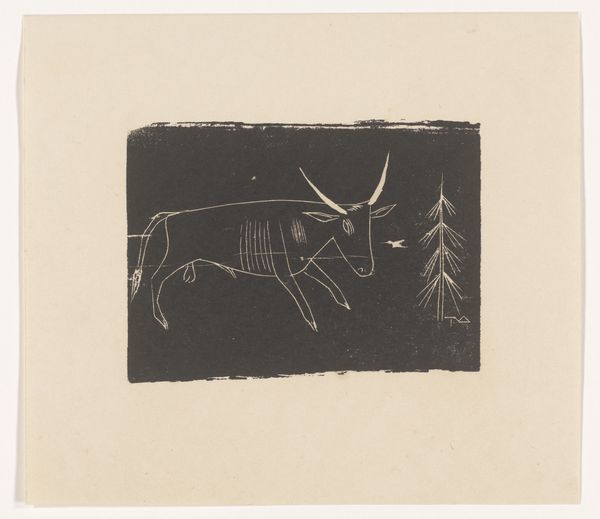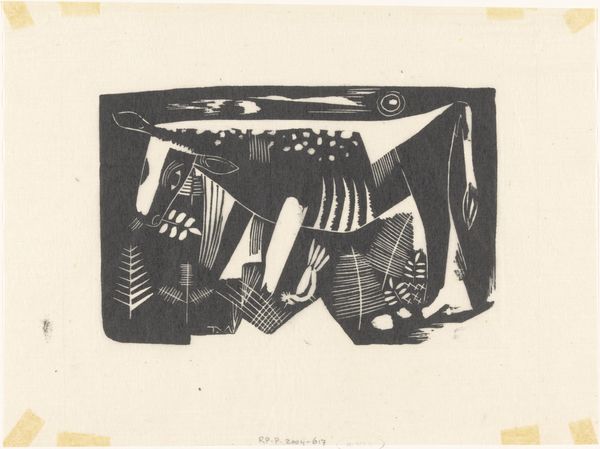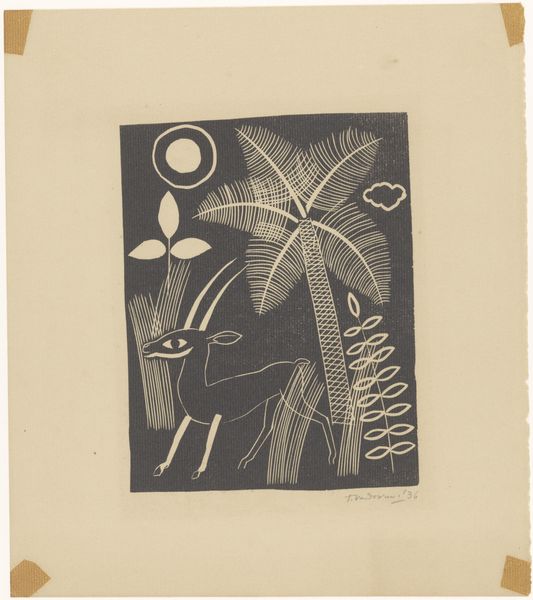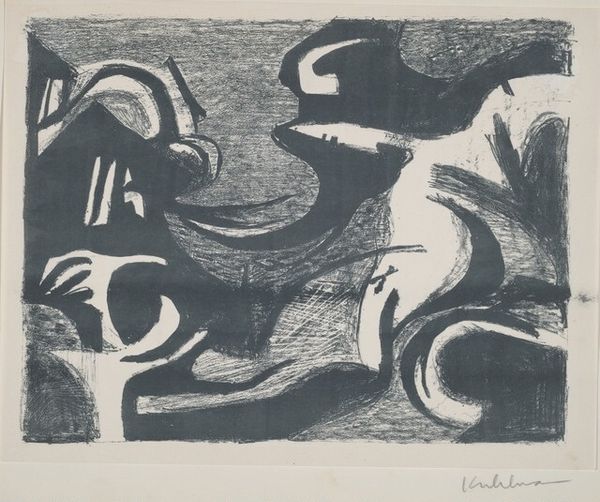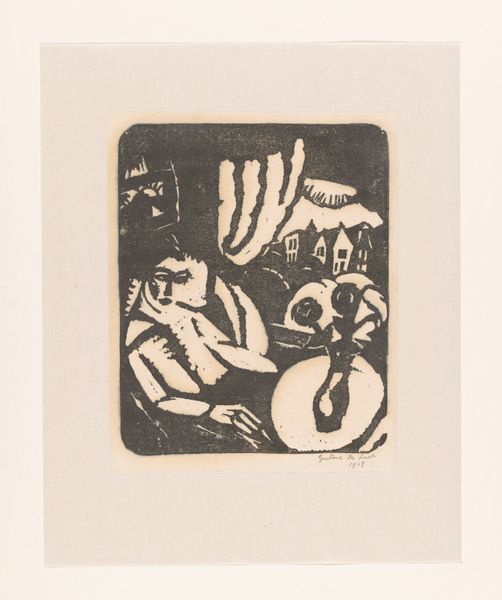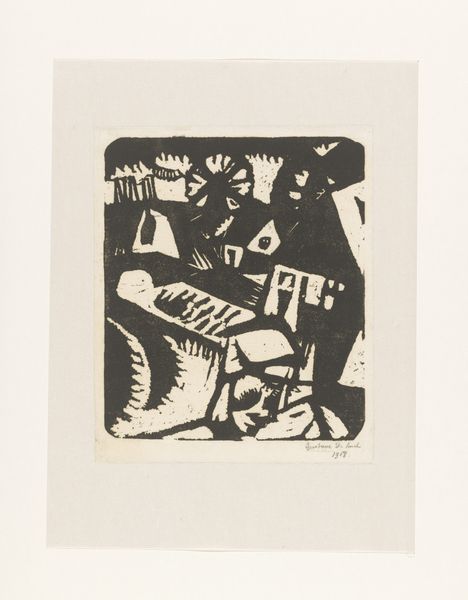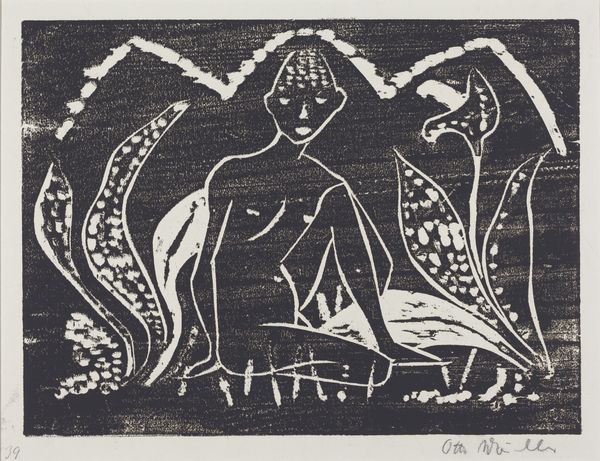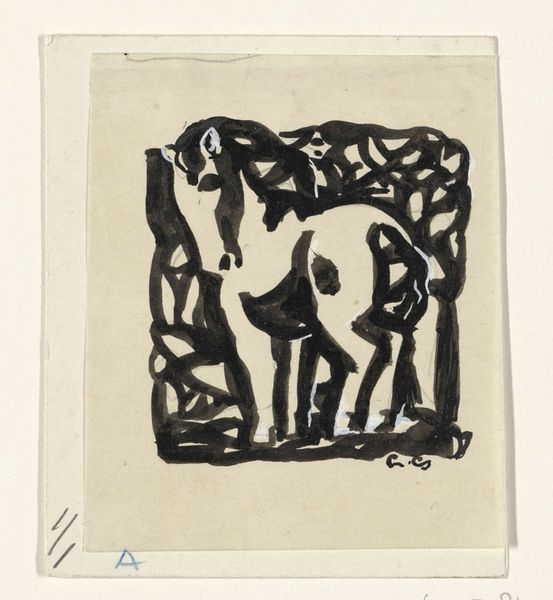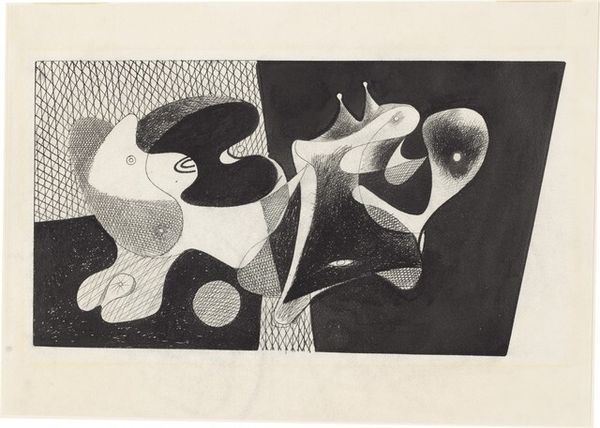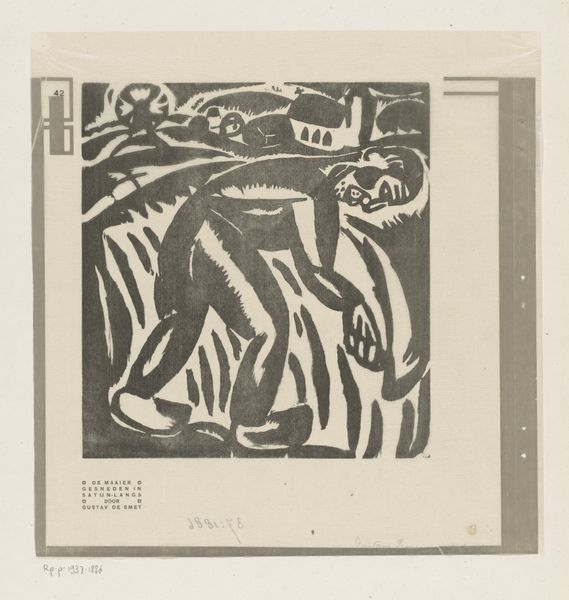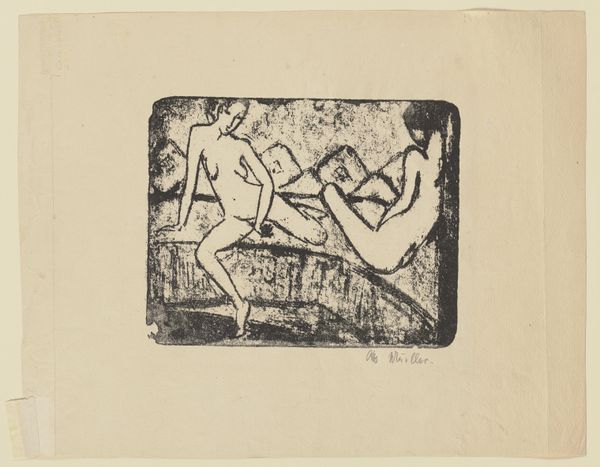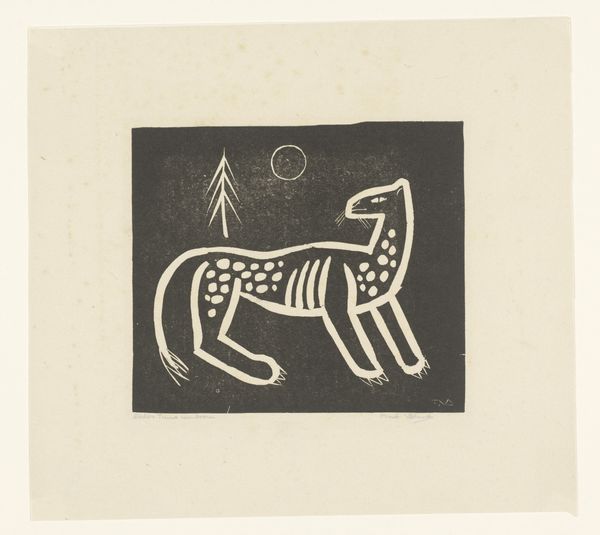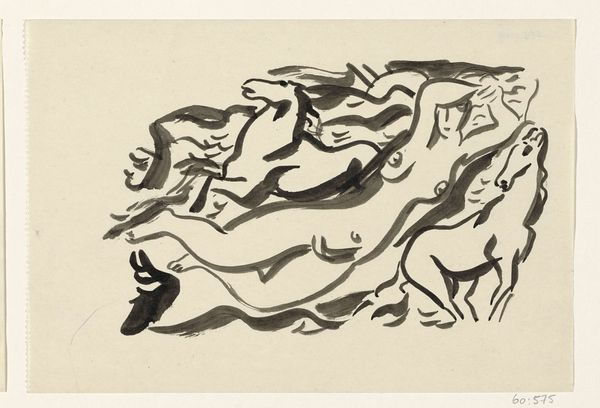
Dimensions: height 135 mm, width 183 mm, height 230 mm, width 301 mm
Copyright: Rijks Museum: Open Domain
Art Historian: Welcome. Before us is “Stier,” created by Tinus van Doorn in 1934. The artwork is a woodcut print, currently held in the Rijksmuseum's collection. Artist: Right away, it hits me—it's so stark and elemental! The high contrast, the stylized bull... It's like a memory of a primal urge, all sharp angles and bold strokes. Kind of intimidating, honestly! Art Historian: Van Doorn, though often categorized within expressionism, demonstrates here a strong pull towards abstraction. What strikes me is how the work negotiates tradition, with clear nods to early 20th-century modernist movements but within a readily accessible, figural framework. Artist: True. I see what you mean about that tension. It’s figurative but on the edge of dissolving. The geometric sun and tree echo the stylized animal form, and yet... there's an expressive rawness in the woodcut's texture, a certain roughness of line that prevents it from becoming sterile. Like it's both controlled and wild at the same time. Art Historian: Indeed. Woodcut, as a medium, offered many artists during this period a way to engage with themes of labor, the machine age, and national identity. Van Doorn was working in a period where printmaking held potent communicative possibilities, outside of mainstream exhibition practices. Artist: Thinking about communication—there’s almost a narrative minimalism to it. Is that a landscape? A story being hinted at? It reminds me of cave paintings…stripped down, essential…but radiating an internal force, even danger. Art Historian: A fitting assessment. "Stier" serves as a compelling example of how an artist can synthesize diverse aesthetic tendencies during a critical period in European history. The politics of imagery—representing, abstracting, symbolizing— were very consciously being debated. Artist: Well, whatever the history and intention, I know that looking at it leaves me unsettled. It's got that visceral punch, that animal energy... It sticks with you. A pretty good testament to the power of raw artistic vision if you ask me. Art Historian: I concur. The ability of this print to engage with the viewer across time is remarkable.
Comments
No comments
Be the first to comment and join the conversation on the ultimate creative platform.
